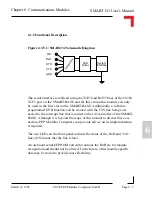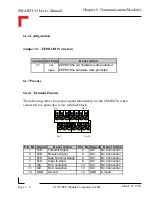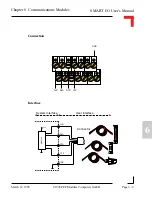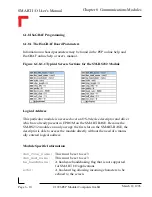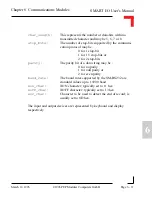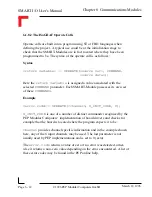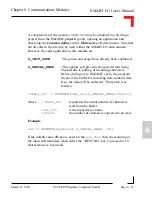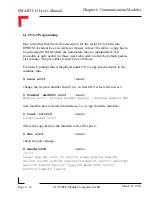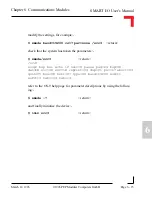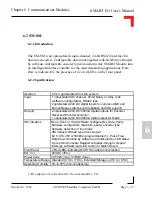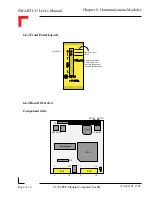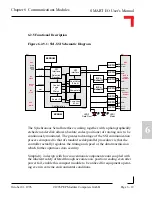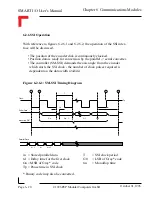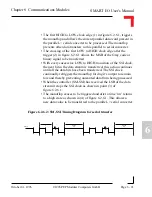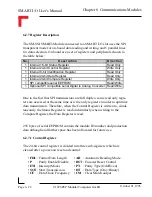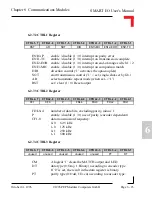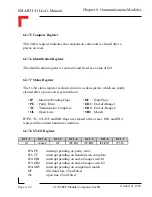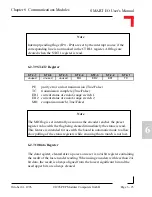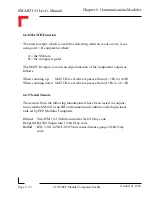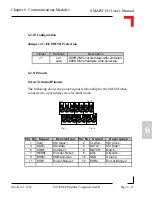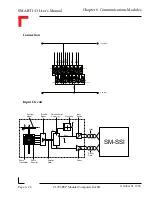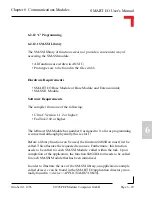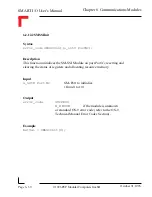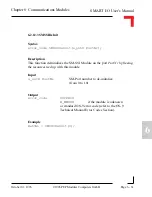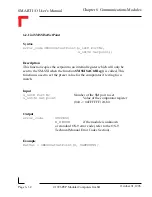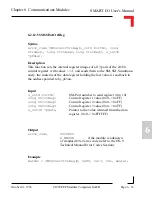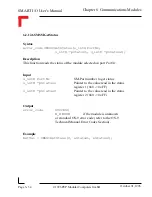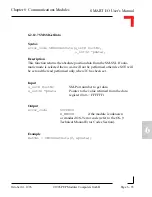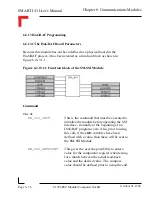
SMART I/O User’s Manual
©1996 PEP Modular Computers GmbH
October 01, 1996
Page 6 - 21
6
Chapter 6 Communications Modules
• The first HIGH to LOW clock edge (1) in figure 6.2.6.1, triggers
the monoflop and allows the current parallel data word present in
the parallel -> serial converter to be processed. The monoflop
prevents other data transfers to this parallel to serial converter.
• The crossing of the first LOW to HIGH clock edge after the
trigger (2) in figure 6.2.6.1 allows the MSB of the Gray code or
binary signal to be transferred.
• With every successive LOW to HIGH transition of the SSI clock,
the next bit in the data stream is transferred; this action continues
until all the data bits have been transferred. The SSI clock
continually retriggers the monoflop forcing it’s output to remain
low and thereby preventing unwanted data from being processed.
• When the controller (SM-SSI) has received the LSB of the data
stream it stops the SSI clock as shown in point (3) of
figure 6.2.6.1.
• The monoflop ceases to be triggered and after a time ‘tm’ returns
to a high state as shown in (4) of figure 6.2.6.1. This allows a
new data value to be transferred to the parallel -> serial converter.
T
Clock
Pause
Tp
Pause
Tp
Figure 6.2.6.2: SM-SSI Timing Diagram for serial transfer

